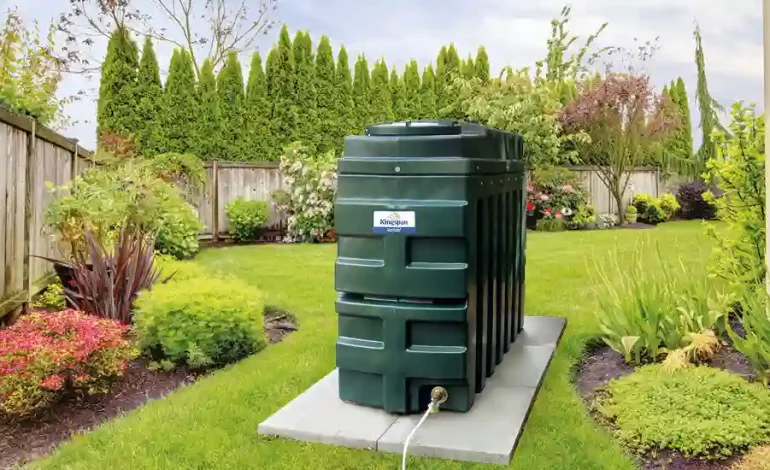Oil Tank Exodus: Strategies for Residential Tank Removal

As homeowners navigate the evolving landscape of home maintenance and environmental responsibility, the removal of residential oil tanks has become a prominent consideration. “Oil Tank Exodus” explores strategic approaches for the removal of residential oil tanks, providing homeowners with insights into the process, considerations, and key strategies for a successful and responsible tank removal.
Early Assessment: Understanding the Lifespan of Oil Tanks
The strategic journey of residential oil tank removal begins with early assessment. Understanding the lifespan of oil tanks is crucial. Most tanks have a lifespan of 15-20 years, and after this period, they are prone to corrosion and leaks. Homeowners should conduct regular inspections and assessments to gauge the condition of the tank and anticipate the need for removal before issues escalate.
Environmental Precautions: Proactive Measures for a Green Transition
Embracing environmental precautions is a strategic pillar in residential oil tank removal. Proactive measures, such as conducting soil and groundwater tests before removal, help identify potential environmental impacts. By assessing the environmental landscape early in the process, homeowners can strategize for eco-friendly removal methods and, if needed, plan for post-removal remediation.
Regulatory Compliance: Navigating the Legal Framework
Navigating the legal framework surrounding oil tank removal is a strategic necessity. Compliance with local regulations and securing the required permits is fundamental to a smooth removal process. Homeowners should research and understand the specific regulatory requirements in their area, ensuring they adhere to legal standards throughout the strategic removal process.
Professional Guidance: The Role of Certified Removal Experts
Engaging certified removal experts is a strategic decision that significantly impacts the success of the removal process. Professionals bring expertise in assessing tank conditions, recommending suitable removal methods, and navigating regulatory complexities. Homeowners should strategically collaborate with removal experts to ensure a seamless and compliant oil tank exodus.
Choosing the Right Removal Method: Tailoring to Property Dynamics
The strategic choice of the removal method is crucial and depends on various property dynamics. Factors such as tank condition, location, and potential environmental impact guide this decision. In some cases, in-place abandonment may be suitable, while others may require complete extraction. Tailoring the removal method strategically ensures an efficient and environmentally responsible oil tank exodus.
Budgeting Wisely: Accounting for Unforeseen Challenges
A strategic budget is essential for homeowners embarking on an oil tank exodus. Anticipating potential costs and accounting for unforeseen challenges, such as environmental remediation, ensures financial preparedness. Strategic budgeting, often in collaboration with removal professionals, minimizes surprises and allows for a smoother oil tank removal process.
Site Excavation: Precision and Safety
Site excavation is a strategic phase in the oil tank exodus process that demands precision and safety. Skilled operators using specialized equipment carefully excavate around the tank to avoid damage and minimize environmental impact. Strategic excavation sets the stage for subsequent removal steps, ensuring a controlled and safe extraction.
Safe Pumping and Cleaning: Minimizing Environmental Footprints
The strategic removal of oil from the tank involves safe pumping and cleaning practices. Utilizing advanced pumping technologies minimizes the risk of spills, contributing to a cleaner removal process. Biodegradable cleaning agents further reduce environmental footprints, aligning with the strategic goal of eco-friendly oil tank exodus.
Lifting and Transport: Ensuring Secure Extraction
Strategic lifting and transport of the tank are pivotal to the success of the oil tank exodus. Employing precision and specialized equipment ensures secure extraction without damage. Skilled operators lead the strategic removal, minimizing risks associated with lifting and transporting the tank from the residential property.
Post-Removal Verification: Confirming a Successful Exodus
A strategic post-removal verification process is the final step in confirming the success of the oil tank exodus. Environmental testing and soil analysis ensure that the property is free from contamination, providing homeowners with peace of mind. Strategic post-removal verification completes the process, leaving a clean slate for future property endeavors.
Conclusion:
Embarking on an oil tank exodus requires strategic planning, collaboration with removal professionals, and a commitment to environmental responsibility. Early assessment, environmental precautions, regulatory compliance, and the strategic choice of removal methods are key pillars in ensuring a successful and responsible tank removal. By strategically addressing each phase of the process, homeowners can navigate the complexities of residential oil tank removal with confidence, leaving behind a property free from potential environmental hazards.







